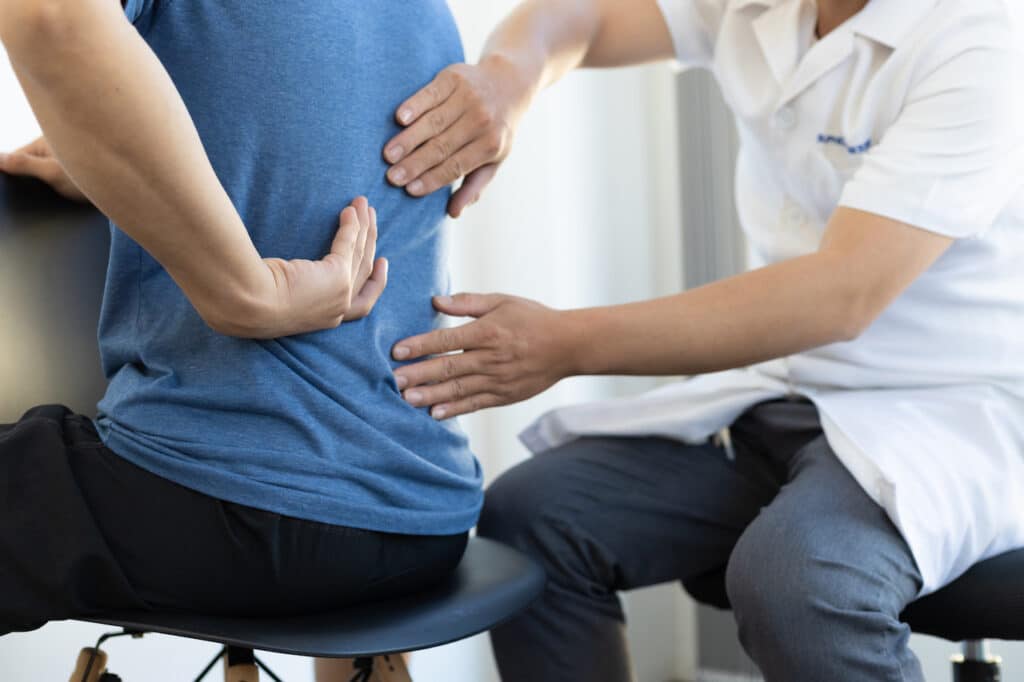Kidney pain location can often feel similar to back pain. Due to this, it can be hard to differentiate between kidney pain and back pain. But not knowing which diagnosis to choose can become a bigger problem if it is left untreated. Here is what you need to know when it comes to identifying the difference between kidney pain and back pain.
Common Causes of Kidney Pain
First, it is important to understand what causes kidney pain. Some common causes of kidney pain include:
Kidney Infections
These occur when bacteria have traveled to the kidney from another part of your body, usually through the urinary tract. They can cause pain in the side and back, along with an increased need for urination and fever. So if you’re having to take multiple trips to the bathroom and you’re also experiencing pain in the side and back, it might be a kidney infection.
Kidney Stones
These hard masses form due to a build-up of minerals in the body that eventually accumulates in the kidneys. This kidney pain location is on the side and back of your body and may be accompanied by nausea, vomiting, and a fever.
Kidney Diseases
Diseases such as diabetes, high blood pressure, or glomerulonephritis can cause kidney pain. People with these conditions may experience side and back pain along with swelling in the face, hands, and feet.
How to Identify Kidney Pain
The last thing you want is to not be in the know of your own body. To help identify kidney pain, you’ll want to pay attention to the following identifiable factors:
- Kidney pain location: Usually in the flank, which is on either side of your spine between the rib cage and hips. It may also arise in the side, abdomen, or lower back, typically on one side, but potentially on both.
- Type of pain: Dull, sharp, or radiating.
- Severity of the pain: Mild to severe. A kidney infection can lead to mild pain while a kidney stone can cause severe pain.
- Other symptoms: Nausea, vomiting, fever, and urinary frequency or urgency.
How to Know When It Is Back Pain
540 people suffer from back pain. To identify back pain, here are some areas to look out for:
- Location: Usually in the lower back. Kidney pain is typically higher on your back.
- Type of pain: Back pain can vary widely, from a dull ache to sharp, stabbing sensations. Muscle stiffness and spasms are also common with back pain.
- Severity of pain: Mild to severe.
- Other symptoms: Tingling sensations and muscle weakness.
What to Do When You Think You Are Experiencing Kidney Pain
If you think you are experiencing pain in a kidney pain location, your go-to should be to seek medical attention right away. Don’t wait for the pain to subside, as it could worsen if left untreated. A doctor can perform a variety of tests such as a urine or blood test, an abdominal CT scan, and an ultrasound to diagnose kidney pain accurately.
Once diagnosed, they will be able to provide you with appropriate treatments and medications that can help in alleviating the symptoms.
Texas Kidney Institute: Your Trusted Kidney Doctor
When it comes to knowing if you’re experiencing kidney pain or back pain, be sure to pay close attention to the signs and symptoms.
At the Texas Kidney Institute, our expert kidney doctors are here to provide diagnosis and treatment for all types of kidney conditions—including kidney pain. With our experienced team of medical professionals, we will work with you to ensure that you get the best-individualized care possible. Contact us today to book an appointment!

